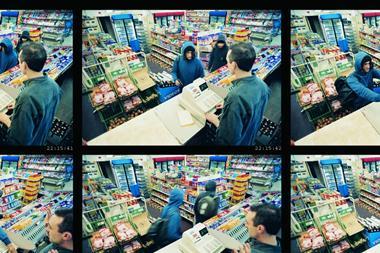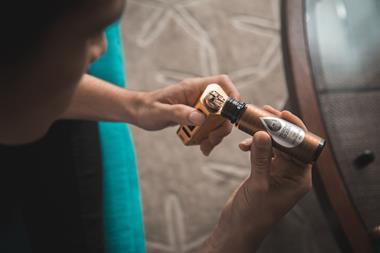No matter what the economic climate, it's important for retailers to keep their store looking fresh without spending too much doing it. Ramesh and Nim Shingadia, who recently won the Londis Store of the Year award for their Southwater store in West Sussex, have managed just that, making a range of improvements without breaking the bank.
One of the ways that Ramesh and Nim were able shake things up without shaking out their pockets was to go through the products in their store and establish which were the best-sellers and which were just gathering dust on the shelf.
To help them they took advantage of Musgrave's CRAM (Core Ranging and Merchandising) programme, which uses sales data from the store and manufacturers to assess exactly what a convenience store should be stocking.
"We took 12 categories in my store and broke down all the products in each category into three groups - the top group is made up of the products you must stock more of, then the products you shouldn't bother with, and then finally the products you're not stocking but should be," says Ramesh.
"The initial 12 categories were put forward by agreement between Londis category managers, manufacturers and ourselves. We were able to use our local knowledge to assess which categories would benefit most from this programme."
Ramesh combined his experience in the convenience store sector with CRAM's information to make best use of the results. "We had a lot of input via our own store experiences and local knowledge, backed up by scanning data from the tills that ensured a good balance between what CRAM recommended and what we knew our customers wanted."
The updated ranges were then trialled for six weeks and the sales data collected to see how the categories performed after the adjustment. "Once we found out which products we should be focusing on and which ones we should get rid of we saw a massive increase in sales in those 12 categories - 27% in the following six weeks," he says.
Although the scheme had proved successful in determining which lines to focus on, Ramesh was worried that he would be stuck with the lines that he would no longer be selling. "I was concerned about the deleted lines that we had to get rid of," says Ramesh. "But we got compensation from our symbol group to reimburse us for any losses and so my reservations quickly disappeared and the whole exercise gave us the opportunity to update our range."
Branching out
Ramesh didn't stop there and rolled out the programme beyond the initial 12 categories. "Another category that saw a massive increase in sales was the chilled section - a 30% increase. The pet food and the international food also produced some excellent results and we have since dedicated more space to both of these categories.
"Overall, we have increased sales in the store by 8% for little or no cost, which we were very pleased with," he says.
They have built on this success by applying the rules to their product range on a regular basis. "We assess our product range across the store religiously. This entails a review of categories by using our sales data to ensure that we are carrying the recommended range, as well as what our customers request."
Ramesh says that all retailers can increase sales simply by weeding out non-movers and adding new lines. "Just look at what products have been on the shelves for a long time and ask yourself 'Do you really need to have them?' And if not, look at what you should replace them with?"
Less is more
The focus on what sells and what doesn't has also led Ramesh and Nim to review the shelf space dedicated to certain categories.
"Sometimes less can be more," says Ramesh. "It often happens that I'll change a fixture from five shelves to three and then people will be drawn to it. If there's too much happening in an area, it can turn the customer off and they will be less likely to buy from it."
Ramesh recently found this with the condiments section. "We used to have two units with five shelves on each, full of ketchups and sauces, and then suddenly there was a slowdown in demand and so we halved it," he says. "With a smaller range and less clutter, sales of condiments have grown, so it may be the case that we'll have to increase the space again!"
The couple have found that customers welcome changes such as these. "When we move our ranges around, customers spot something new and will be tempted to buy on impulse - increasing their spend in the store. They get bored of the store if things aren't changed around regularly. They'll go on automatic pilot and buy the same things again and again. A change around of products can really grab their attention."
Ramesh believes that regular remerchandising and updating ranges are important and can be done for little cost. "If you keep an eye on the changes in the industry then you are in a good position to move with them. It's very easy to just sit back, but to really do well in retail you have to be aware of new trends and demands from the customers and adjust your store accordingly.
"It doesn't have to be expensive but if done right, it can really make a difference to sales."
One of the ways that Ramesh and Nim were able shake things up without shaking out their pockets was to go through the products in their store and establish which were the best-sellers and which were just gathering dust on the shelf.
To help them they took advantage of Musgrave's CRAM (Core Ranging and Merchandising) programme, which uses sales data from the store and manufacturers to assess exactly what a convenience store should be stocking.
"We took 12 categories in my store and broke down all the products in each category into three groups - the top group is made up of the products you must stock more of, then the products you shouldn't bother with, and then finally the products you're not stocking but should be," says Ramesh.
"The initial 12 categories were put forward by agreement between Londis category managers, manufacturers and ourselves. We were able to use our local knowledge to assess which categories would benefit most from this programme."
Ramesh combined his experience in the convenience store sector with CRAM's information to make best use of the results. "We had a lot of input via our own store experiences and local knowledge, backed up by scanning data from the tills that ensured a good balance between what CRAM recommended and what we knew our customers wanted."
The updated ranges were then trialled for six weeks and the sales data collected to see how the categories performed after the adjustment. "Once we found out which products we should be focusing on and which ones we should get rid of we saw a massive increase in sales in those 12 categories - 27% in the following six weeks," he says.
Although the scheme had proved successful in determining which lines to focus on, Ramesh was worried that he would be stuck with the lines that he would no longer be selling. "I was concerned about the deleted lines that we had to get rid of," says Ramesh. "But we got compensation from our symbol group to reimburse us for any losses and so my reservations quickly disappeared and the whole exercise gave us the opportunity to update our range."
Branching out
Ramesh didn't stop there and rolled out the programme beyond the initial 12 categories. "Another category that saw a massive increase in sales was the chilled section - a 30% increase. The pet food and the international food also produced some excellent results and we have since dedicated more space to both of these categories.
"Overall, we have increased sales in the store by 8% for little or no cost, which we were very pleased with," he says.
They have built on this success by applying the rules to their product range on a regular basis. "We assess our product range across the store religiously. This entails a review of categories by using our sales data to ensure that we are carrying the recommended range, as well as what our customers request."
Ramesh says that all retailers can increase sales simply by weeding out non-movers and adding new lines. "Just look at what products have been on the shelves for a long time and ask yourself 'Do you really need to have them?' And if not, look at what you should replace them with?"
Less is more
The focus on what sells and what doesn't has also led Ramesh and Nim to review the shelf space dedicated to certain categories.
"Sometimes less can be more," says Ramesh. "It often happens that I'll change a fixture from five shelves to three and then people will be drawn to it. If there's too much happening in an area, it can turn the customer off and they will be less likely to buy from it."
Ramesh recently found this with the condiments section. "We used to have two units with five shelves on each, full of ketchups and sauces, and then suddenly there was a slowdown in demand and so we halved it," he says. "With a smaller range and less clutter, sales of condiments have grown, so it may be the case that we'll have to increase the space again!"
The couple have found that customers welcome changes such as these. "When we move our ranges around, customers spot something new and will be tempted to buy on impulse - increasing their spend in the store. They get bored of the store if things aren't changed around regularly. They'll go on automatic pilot and buy the same things again and again. A change around of products can really grab their attention."
Ramesh believes that regular remerchandising and updating ranges are important and can be done for little cost. "If you keep an eye on the changes in the industry then you are in a good position to move with them. It's very easy to just sit back, but to really do well in retail you have to be aware of new trends and demands from the customers and adjust your store accordingly.
"It doesn't have to be expensive but if done right, it can really make a difference to sales."
























No comments yet